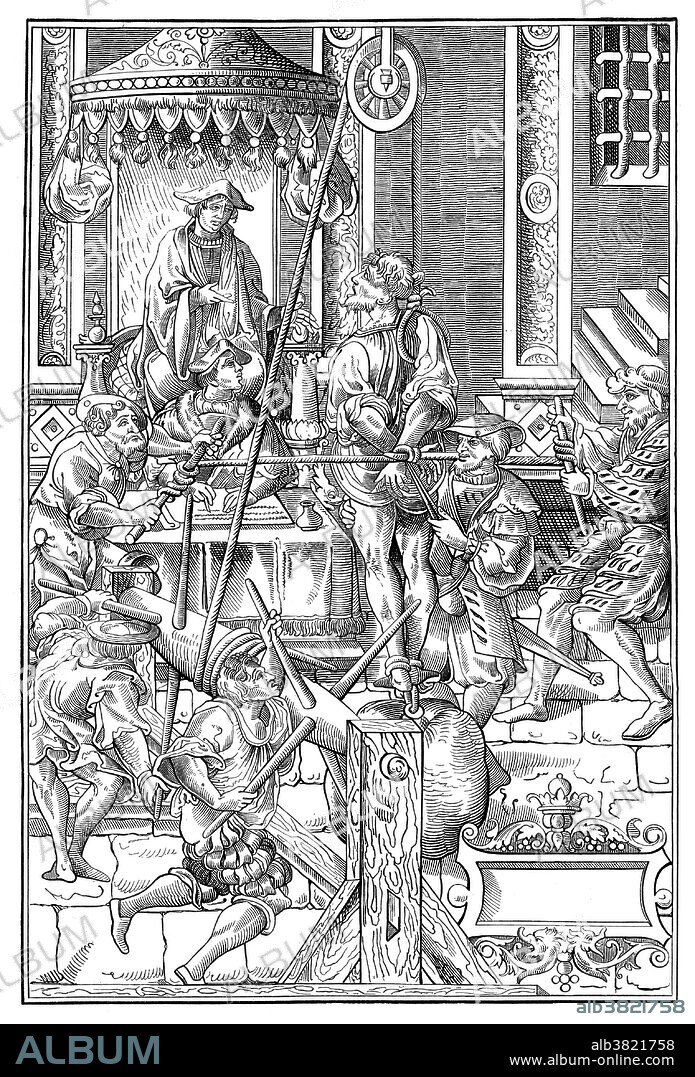alb3821758
The Strappado, 1541

|
Ajouter à une autre Lightbox |
|
Ajouter à une autre Lightbox |



Avez-vous déjà un compte? S'identifier
Vous n'avez pas de compte ? S'inscrire
Acheter cette image

Titre:
The Strappado, 1541
Légende:
Voir la traduction automatique
The strappado is a form of torture wherein the victim has his or her arms tied behind their back; a large rope is then tied to the wrists and passed over a pulley, beam, or a hook on the roof. The torturer pulls on this rope until the victim is hanging from the arms. Since the hands are tied behind the victim's back, this will cause a very intense pain and possible dislocation of the arms. The full weight of the subject's body is then supported by the extended and internally rotated shoulder sockets. While the technique shows no external injuries, it can cause long-term nerve, ligament, or tendon damage. The technique typically causes brachial plexus injury, leading to paralysis or loss of sensation in the arms. Weights may be added to the body to intensify the effect and increase the pain. This kind of torture would generally not last more than an hour, without rest, as it would likely result in death. Other names for strappado include; reverse hanging, Palestinian hanging and il tormento della corda. Historically, it was used by the medieval Inquisition and many governments. Woodcut from "The Criminal Procedure" (Praxis Criminus Persequendi), 1541.
Crédit:
Album / NYPL/Science Source
Autorisations:
Modèle: Non - Propriété: Non
Questions sur les droits?
Questions sur les droits?
Taille de l'image:
3054 x 4500 px | 39.3 MB
Taille d'impression:
25.9 x 38.1 cm | 10.2 x 15.0 in (300 dpi)
Mots clés:
 Pinterest
Pinterest Twitter
Twitter Facebook
Facebook Copier le lien
Copier le lien Email
Email
